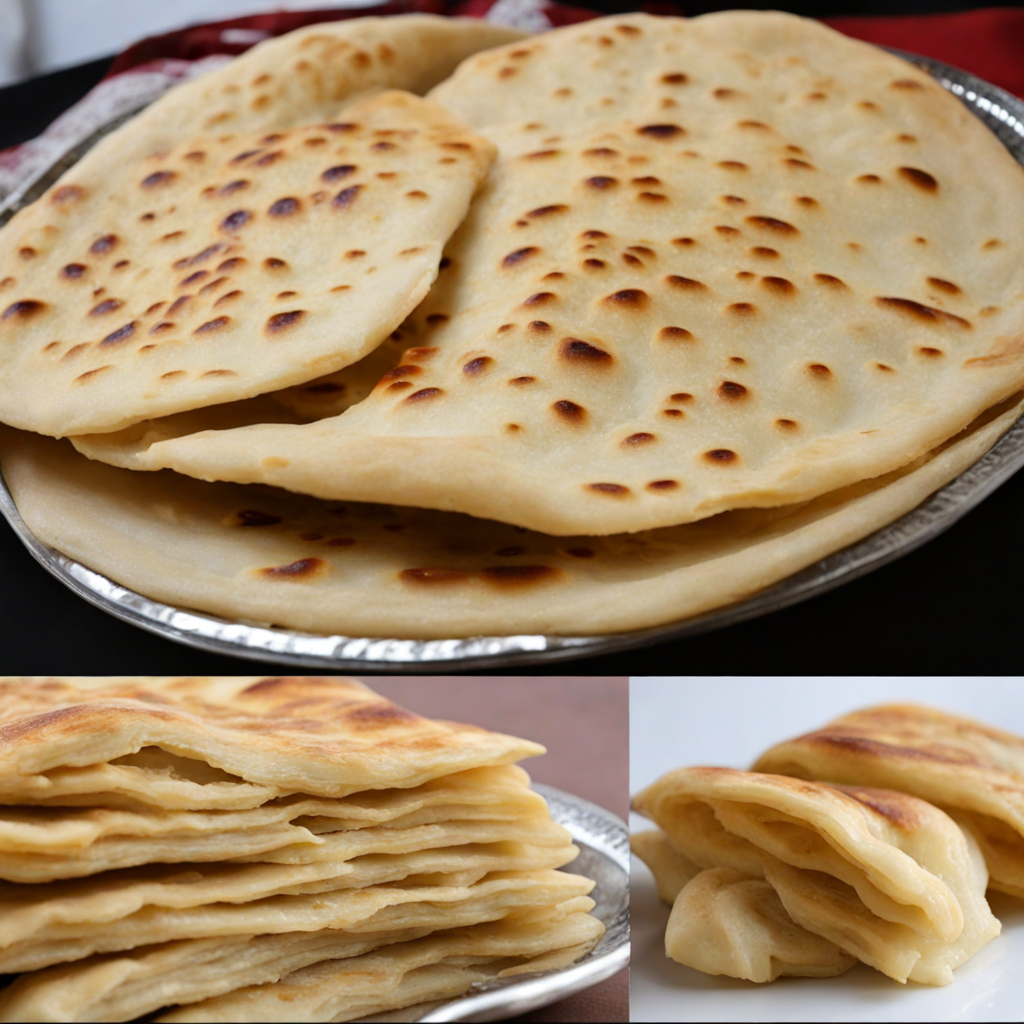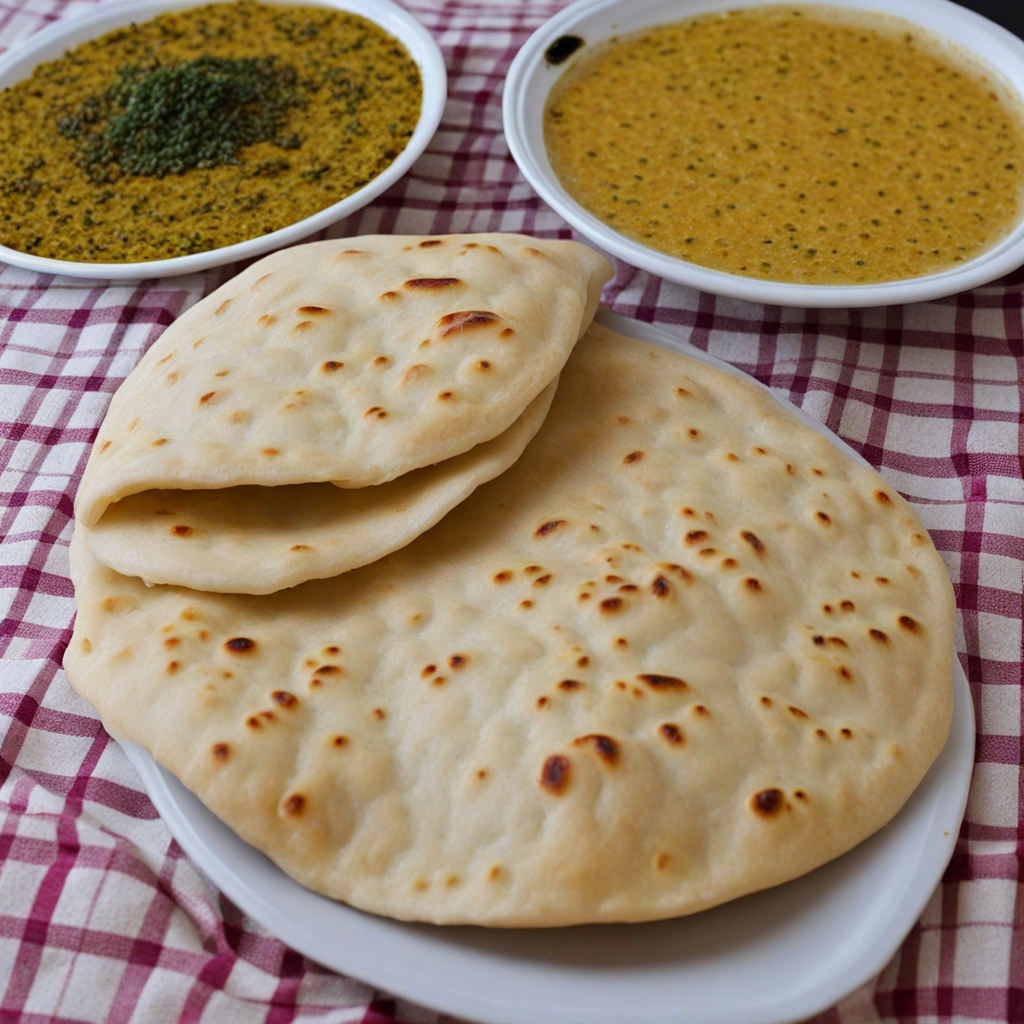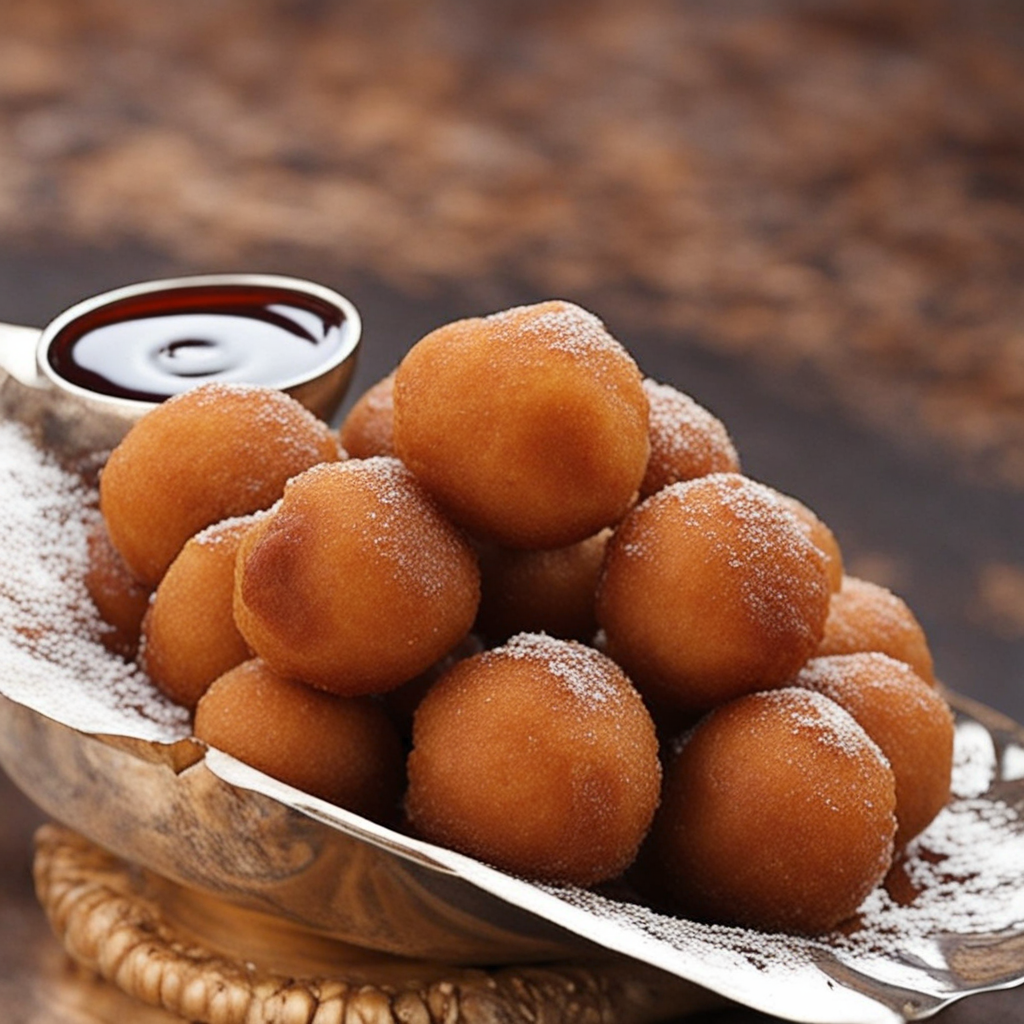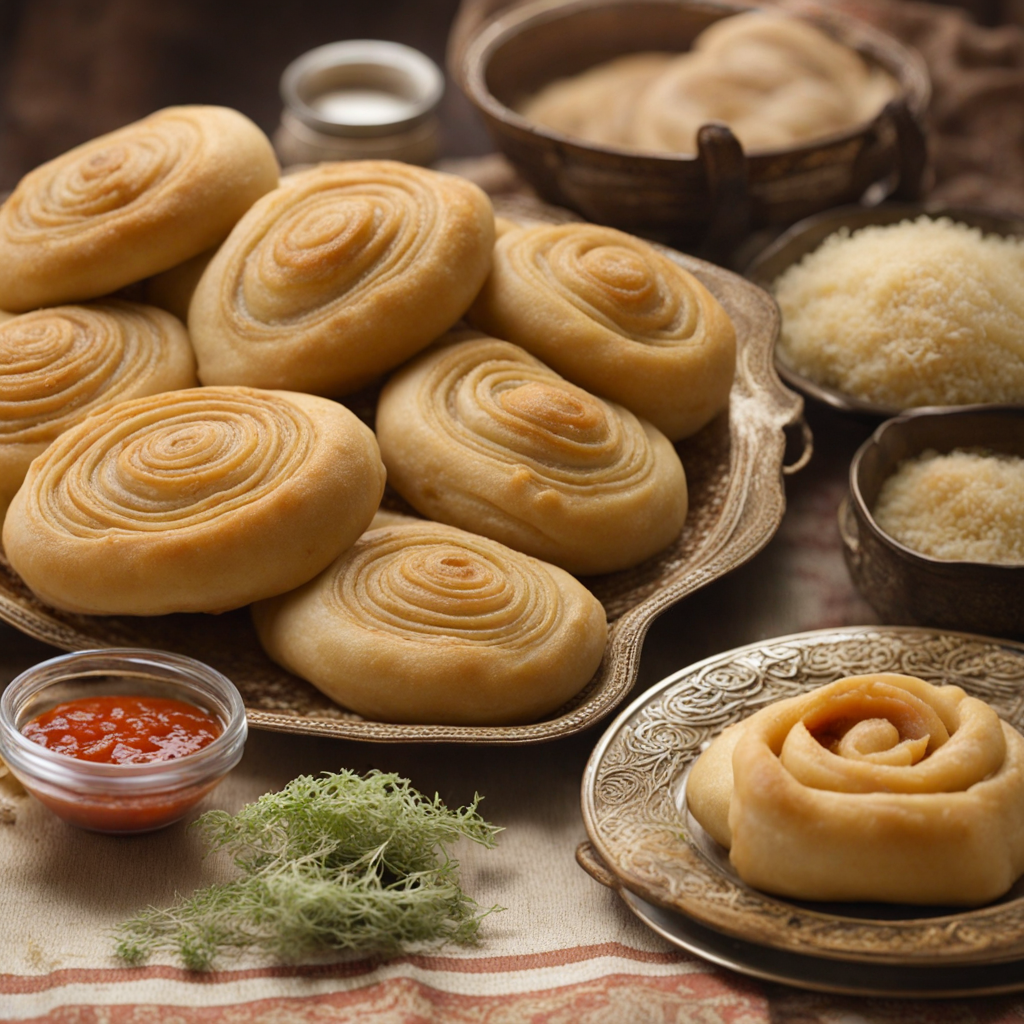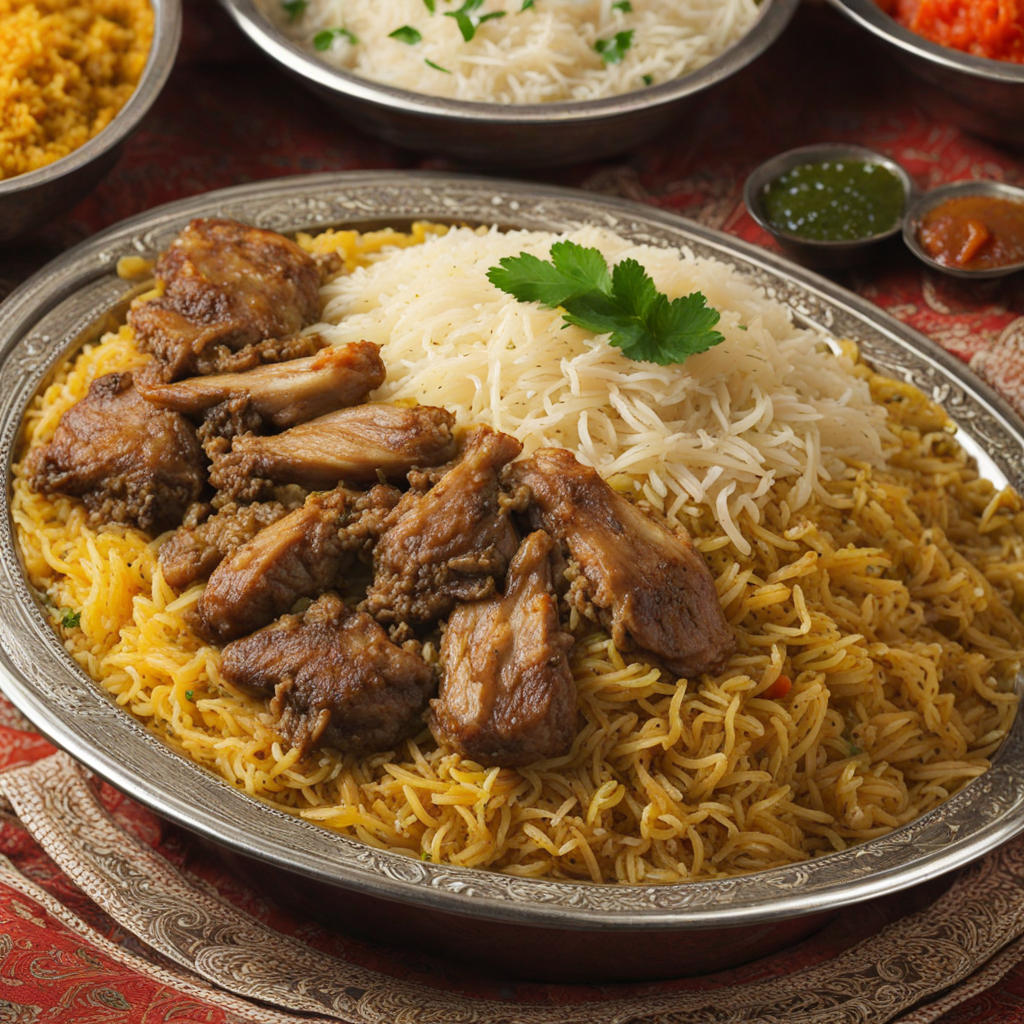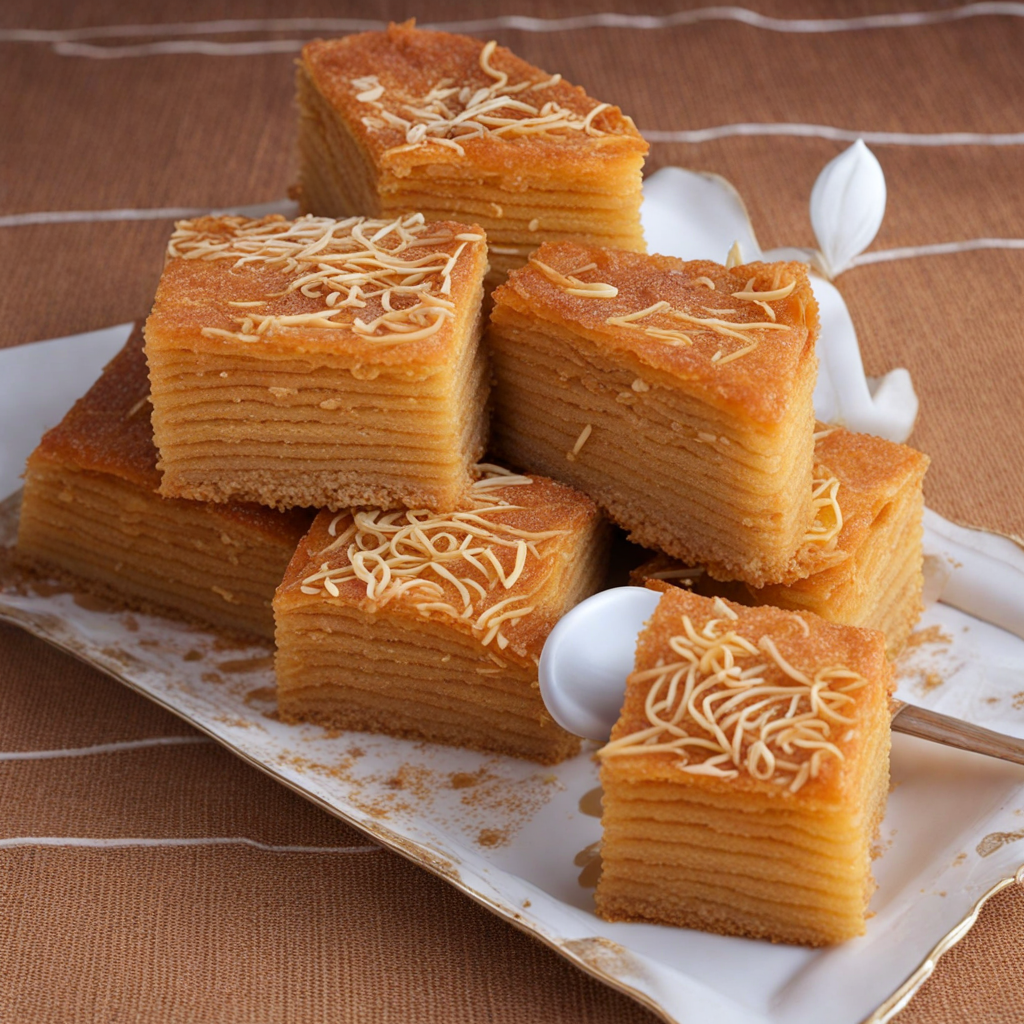Malawah
Malawah is a traditional Yemeni flatbread that captivates the senses with its unique texture and rich flavor. This delectable dish is made from a simple combination of flour, water, and a touch of salt, yet it transforms into something extraordinary through the cooking process. The dough is meticulously kneaded and then rolled into thin circles, which are cooked on a hot griddle, creating layers that are crispy on the outside while remaining soft and pliable on the inside. The result is a bread that is both comforting and versatile, making it the perfect accompaniment to a variety of dishes. What sets Malawah apart is its delightful flavor profile, often enhanced by the addition of ghee or oil during the cooking process. This not only adds a rich, buttery taste but also gives the bread a beautiful golden hue. In Yemen, Malawah is traditionally enjoyed with savory stews, spicy chutneys, or even sweet toppings like honey or syrup, allowing for a delightful contrast of flavors that tantalizes the palate. The bread can also be folded or rolled, making it easy to scoop up delicious morsels or to wrap around fillings, providing a satisfying and hearty meal. Beyond its taste, Malawah holds cultural significance in Yemeni cuisine, often served during special occasions and gatherings. Its preparation is a communal activity, bringing families together in the kitchen. As you take your first bite of Malawah, you are not just experiencing a dish but also a slice of Yemeni heritage that reflects the warmth and hospitality of its people. The unique blend of textures and flavors makes Malawah a must-try for anyone looking to expand their culinary horizons and indulge in something truly exceptional.
How It Became This Dish
The Flavorful History of Mluḥ: Yemen's Culinary Treasure #### Origins Mluḥ (ملوح), a traditional Yemeni food, is a type of salted fish that has become an integral part of the country’s culinary heritage. Its roots can be traced back to the coastal regions of Yemen, particularly along the Red Sea and the Arabian Gulf. The practice of preserving fish through salting dates back thousands of years, a method employed by many ancient civilizations to ensure food security and enhance flavors. In Yemen, where the arid climate and limited access to fresh food posed challenges, salting was not only a practical solution but also a way to celebrate the bountiful marine life of the Red Sea. Fishermen would catch various species of fish, such as grouper and sardines, and then prepare them using a time-honored technique of salting and sun-drying. This preservation method allowed the fish to be stored for extended periods, making it a staple in Yemeni households, especially in rural areas where access to fresh produce was limited. #### Cultural Significance Mluḥ is more than just a food item; it is a symbol of Yemeni identity and culture. The preparation and consumption of Mluḥ embody the communal spirit of Yemeni society. Traditionally, the process of making Mluḥ is a collective endeavor. Families would gather to fish and prepare the catch, sharing stories and bonding over the labor of love that goes into creating this delicacy. It is often enjoyed during significant gatherings and celebrations, reinforcing its role in social cohesion and cultural identity. In Yemeni cuisine, the method of serving Mluḥ is also noteworthy. It is typically accompanied by staple items such as flatbreads, rice, or vegetable stews, allowing it to complement various dishes and enhance their flavors. The dish is often seasoned with spices like cumin and coriander, which are prevalent in Yemeni cooking, further enriching its taste profile. Moreover, Mluḥ has found its place in Yemeni folklore and tradition. It is often served as a special dish during Ramadan, emphasizing its significance during periods of fasting and feasting. The preparation and sharing of Mluḥ during this holy month serve to strengthen familial bonds and foster communal ties. #### Development Over Time As Yemen navigated through historical changes, so did Mluḥ. The dish has undergone various transformations influenced by social, economic, and political factors. With the expansion of trade routes and maritime exchanges, new techniques and recipes began to emerge. The introduction of different spices and cooking methods enriched the traditional preparation of Mluḥ, allowing it to evolve while retaining its core identity. In the late 20th and early 21st centuries, Yemen faced significant challenges, including political instability and economic hardship. The fishing industry, which had been a cornerstone of the Yemeni economy, struggled under these pressures. However, the resilience of Yemeni culture prevailed, and the love for Mluḥ remained steadfast. Home-cooked versions of Mluḥ became a source of comfort and nostalgia for many Yemenis, especially those living in diaspora communities around the world. In urban areas, the dish has also adapted to modern tastes and lifestyles. While traditional methods of preparation continue to be cherished, some chefs have started to incorporate contemporary culinary techniques, creating innovative interpretations of Mluḥ. These adaptations have not only preserved the dish's heritage but have also introduced it to a wider audience, allowing more people to appreciate its unique flavors and cultural significance. #### Contemporary Relevance Today, Mluḥ stands as a testament to Yemen's rich culinary tradition and cultural resilience. It has gained recognition beyond its borders, with Yemeni diaspora communities playing a crucial role in promoting its heritage. Restaurants and food markets in cities around the world, especially in the Gulf states and Western countries, have begun to feature Mluḥ on their menus, showcasing its unique taste and cultural roots. Moreover, the global interest in traditional and sustainable food practices has led to a renewed appreciation for Mluḥ. As more people seek authentic culinary experiences, the dish has found its way into food festivals and cultural events, where it is celebrated as a symbol of Yemeni heritage. This newfound attention has sparked discussions about food security, sustainability, and the importance of preserving traditional food practices in a rapidly changing world. #### Conclusion The journey of Mluḥ from the coastal waters of Yemen to the tables of Yemeni families and beyond is a rich tapestry of history, culture, and resilience. It serves as a reminder of the deep connections between food, identity, and community. As Yemen continues to face challenges, the enduring love for Mluḥ exemplifies the spirit of its people—rooted in tradition yet adaptable to change. As we savor the flavors of Mluḥ, we not only enjoy a delicious dish but also partake in a cultural legacy that has been passed down through generations. The story of Mluḥ is a celebration of Yemen’s rich culinary heritage, a symbol of community and resilience, and a reminder of the power of food to connect us across borders and generations. In every bite of Mluḥ, one can taste the history and heart of Yemen, making it a cherished food that transcends time and place.
You may like
Discover local flavors from Yemen


